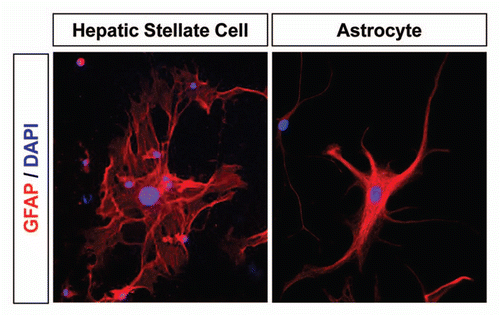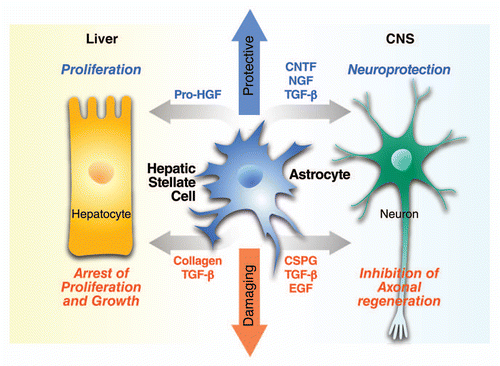Figures & data
Table 1 Functions of neuroglial-related molecules expressed in HSCs

